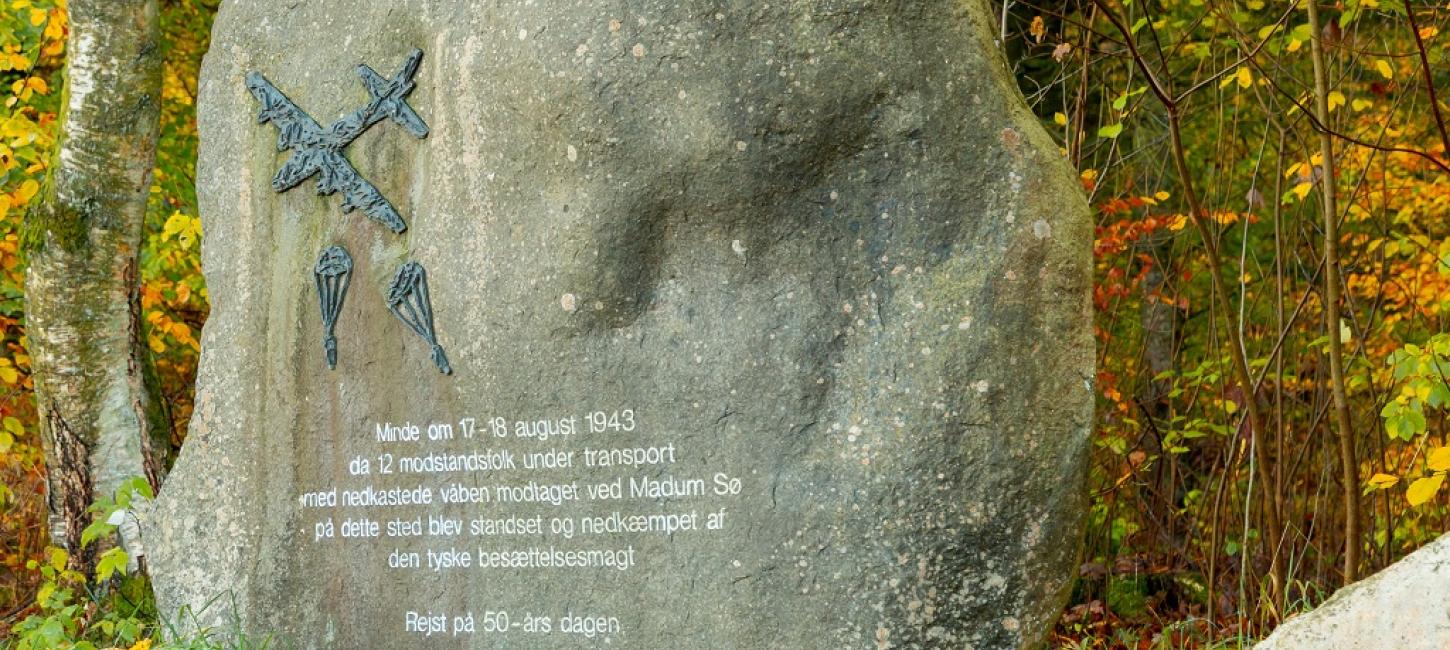
2. World War in Rebild
The 2. World War affected the area of Rebild greatly, with a radar station and listening post in the hills. The local resistance group played a significant role in Danish history, as they ignited unrest which ultimately led to the full occupation of Denmark in 1943.
ATTACK AT HOLLANDSHUS, Skørping
On the 17th of August 1943, a group of 12 men from the Danish resistance movement were on their way to collect an airdrop from a British aircraft at Madum Sø, which lies in the eastern part of Rold Forest. The cargo contained weapons, explosives and materials used for the resistance group’s sabotage work against the German occupation force. The group had retrieved the airdrops successfully three times before, however, tonight's outing would turn out differently.
A secret code was delivered through the BBC radio broadcast at 18:00, alerting the resistance group to an airdrop. On the 17th the group had not anticipated the announcement and was caught unprepared - this meant that all drove to Madum Sø together.
The airplane circled over the lake several times, before making the airdrop. After collecting it, the group drove away, but they were stopped by a German military vehicle.
They refused to stop the car and collaborate, so the Germans opened fire on the men. Most were lucky to escape the engagement with the germans, but Niels Erik Vangsted was shot and killed by the bulletfire. Poul Kjær Sørensen lost his footing, fell and was captured by the Germans.
Karl Peter Madsen and Svend Emanuel Simonsen, two of the men present that night, survived the ordeal. Looking back, they recall some of the following details:
''I ended up in a ditch and didn't waste a second to get further between the trees. I fell, got up again and continued, while the projectiles were whisteling about me. When I finally catched my breath, I remember feeling a weird sensation on my scalp and saw that there were two bulletholes in my hat.'' - Karl Peter Madsen
‘‘Paul opened the car door and tried to shoot with his pistol, but received such a salvo that the window shattered. ‘‘That was close,’’ he said. It drummed against the truck, and the bullet holes were visible in the moonlight. It’s strange what you remember.’’ - Svend Emanuel Simonsen
From 'Træfningen ved Hollandshus', by Ole Bergh, 1992
Poul Kjær Sørensen was subsequently sentenced to death, and executed in Copenhagen shortly after. Niels Erik Vangsted, who was killed in the engagement, was buried in Aalborg. Thousands showed up at his funeral, leading to unrest and conflict between German soldiers and the general public. Several people were hurt and two were killed.
The death of Niels Erik Vangsted and the unrest in Aalborg which spread to the rest of Denmark intensified the existing tension between the German occupational force and Danish citizens, culminating on the 29/08/1943 with a breakdown of the previous co-operation between the Danish government and the German forces.
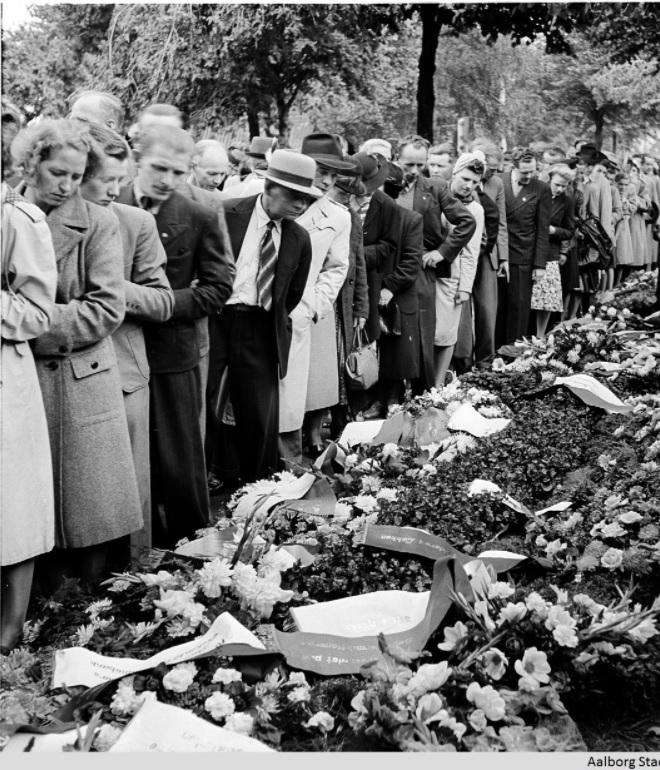
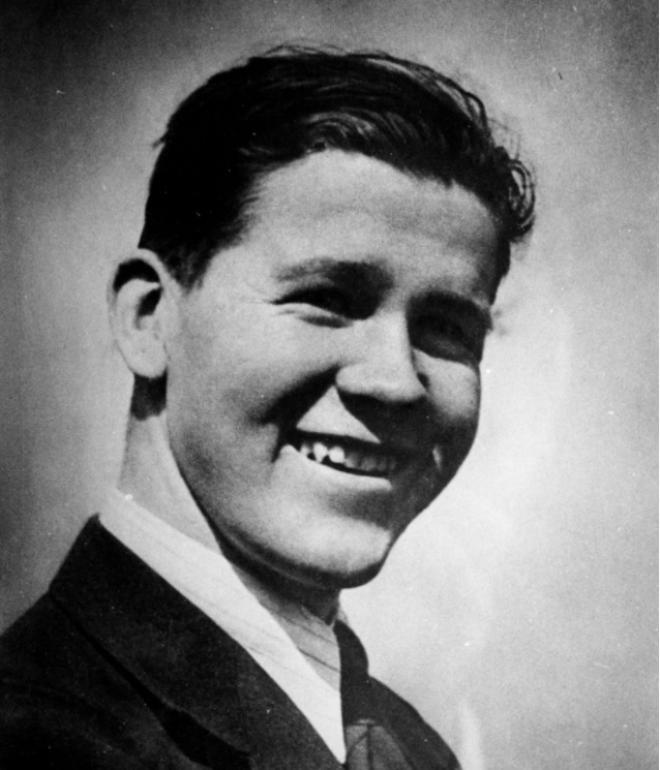
Left: The funeral of Niels Erik Vangsted, Right: Portrait of Niels Erik Vangsted
THE AIRMENS STONE in Rebild Bakker and Torstedlund Forest
The Airmens Stone in Rebild Bakker
The work done by the resistance groups in Denmark would not be possible without the air drop operations completed by allied airmen.
During 2. World War, 415 air drop operations were accomplished. 6500 containers with weapons, ammunition and sabotage equipment were dropped by allied aircrafts, to support the Danish Resistance Movement. However, these operations came with a cost. 18 allied aircrafts were lost over Danish soil, and 69 airmen lost their lives in the line of duty.
‘‘They defied the dangers of darkness and evil in the fight for freedom and peace. Therefore, they shall be remembered for all time, with Denmark’s gratitude” - the quote comes from a memorial stone dedicated to allied airmen, and stands at the entrance of Rebild National Park.
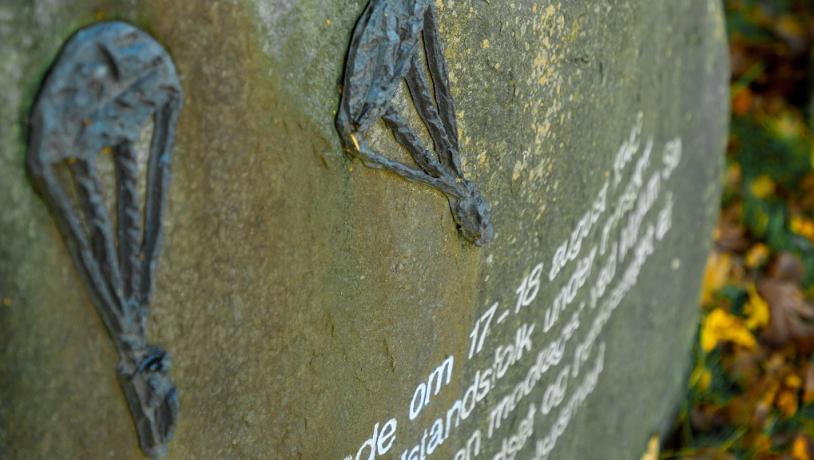
Photo:RebildPorten
The Airmens Stone in Torstedlund Forest
On April 20th 1945, a Liberator Airplane crashed in Rold Forest with 11 men onboard. None of the crew survived the crash. The cause of the crash is unknown, however, it is believed to have been shot down by a German fighter aircraft.
The bodies were buried by German soldiers in an unknown location. It was only through luck and coincidence that their bodies were discovered in 1947. The remains were buried in a local cemetery, their sacrifice never forgotten. The priest concluded his speech for the fallen with the words: Now we will lay to rest our unknown friends.
A memorial stone was, furthermore, erected in Torstedlund forest, in the western part of Rold Forest, where the Liberator had crashed.
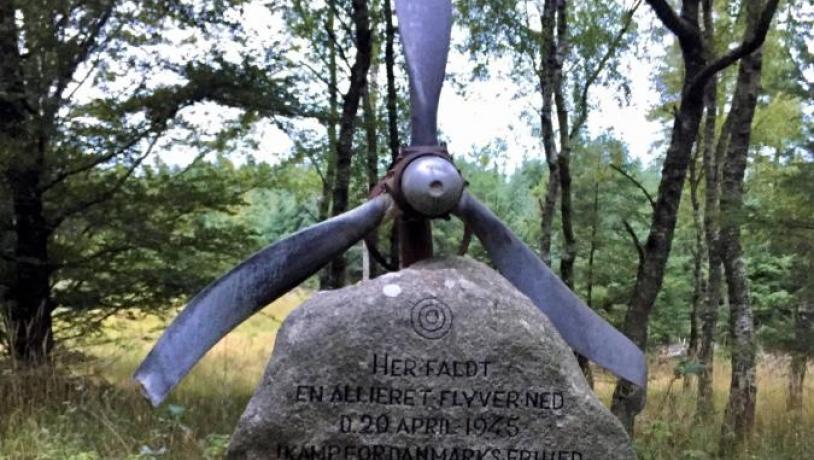
Photo:RebildPorten
TRACES FROM THE GERMAN OCCUPATION in Rebild
The Listening Station
When the Germans occupied Denmark in 1940, they built a radar station in Rebild almost immediately. The station, colloquially called the ‘Listening Station’, was staffed by 16 German soldiers and used throughout the occupation. It was used to detect air traffic and warn the air base in Aalborg.
Located on Sønderkol was the soldier barracks and the actual radar station was placed close to Gryden, where the Rebild Celebration is held. Close by The German Stone can be found.
Little Berlin
After a few years, the Germans expanded their radar warning network with 15 new radar positions. The radar was used to detect aircrafts in dark, foggy weather or when they flew above the clouds.
A station was built in Fræer, located close to Skørping and Støvring. The remains can still be seen on a hilltop, west of the road between Fræer and Skørping. It was the largest of its kind in Denmark, and housed around 400 soldiers and staff. Locals considered it a small town, and began to call it Little Berlin.
After the capitulation, the buildings were used to house German refugees fleeing from the Russian soldiers. At its peak, 2.012 refugees were housed at the camp.